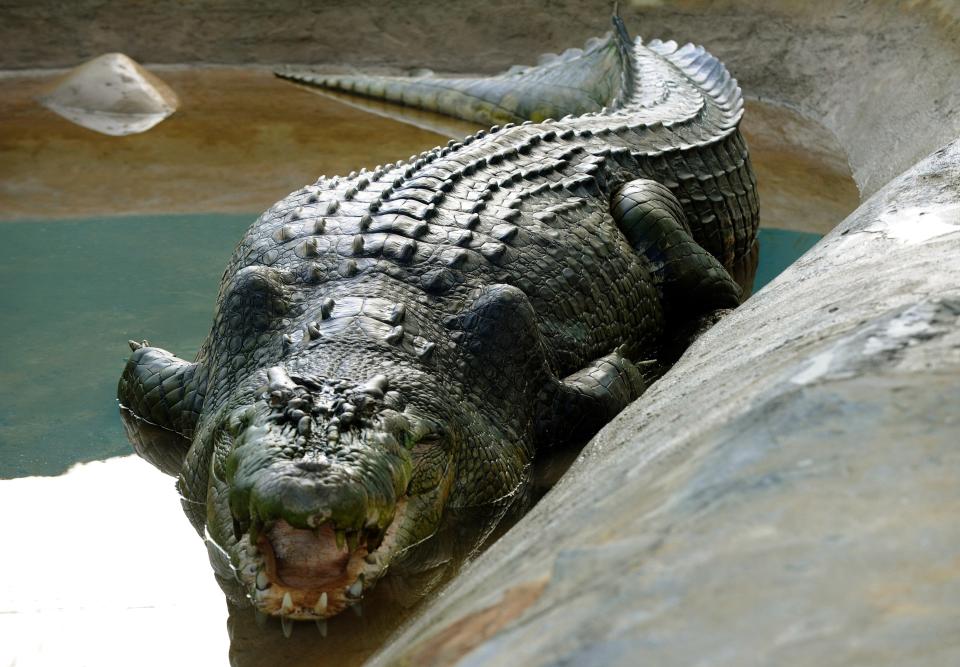Scientists discover prehistoric giant ‘river boss’ crocodile in Australia
Watch: Prehistoric giant ‘river boss’ crocodile discovered in Australia
Scientists have discovered a new species of giant prehistoric crocodile that roamed south-east Queensland’s waterways millions of years ago, a finding which sheds more light on the evolutionary lineage of these large reptiles.
According to the researchers, including Jorgo Ristevski from the University of Queensland in Australia, the new species, named Gunggamarandu maunala, is “one of the largest crocs to have ever inhabited” the continent.
The genus name Gunggamarandu means “river boss,” and the species name maunala means “hole head” – referring to the large, hole-like openings located on top of the animal’s skull that served as a place for muscle attachment.
“The name of the new species honours the First Nations peoples of the Darling Downs area, incorporating words from the languages of the Barunggam and Waka Waka nations,” study co-author Steve Salisbury said in a statement.
In the study, published in the journal Scientific Reports, the scientists analysed a partial skull unearthed in the Darling Downs about 1875 that was kept safe in the collection of the Queensland Museum for over a hundred years.

While the exact overall size of the reptile could not be determined based on the analysis of the skull, the scientists believe, proportional to the size of the skull, Gunggamarandu could have been about 7m in length.
“We estimate the skull would have been at least 80 centimetres long, and based on comparisons with living crocs, this indicates a total body length of around seven metres,” Ristevski said in a statement.
Based on the analysis, the scientists say Gunggamarandu maunala could be on par with the largest Indo-Pacific crocs on record – the Crocodylus porosus.
The study could not estimate the exact age of the fossil, but scientists believe the bones were probably between two and five million years old.
Using CT X-ray scans, the researchers could digitally reconstruct the brain cavity of the reptile and unravel additional details about its anatomy.
They say the new crocodile belonged to a group of the reptiles called tomistomines or ‘false gharials’ – of which only one species remains today, restricted to the Malay Peninsula and parts of Indonesia.
“The results hint at a potential ghost lineage between European and Australian tomistomines going back more than 50 million years,” the scientists wrote in the study.
“With the exception of Antarctica, Australia was the only other continent without fossil evidence of tomistomines. But with the discovery of Gunggamarandu we can add Australia to the ‘once inhabited by tomistomines’ list,” Ristevski added.
Watch: These Crazy ‘Terror Crocodiles’ Ate Dinosaurs with Huge Teeth
Read More
British woman saved from crocodile attack by twin wakes from coma
Nasa says newly discovered ‘weird’ planet with ‘unknown’ atmosphere is remarkably similar to Earth
Scientists discover Earth’s core is growing ‘lopsided’ - and solve a 30 year-old mystery

 Yahoo News
Yahoo News 